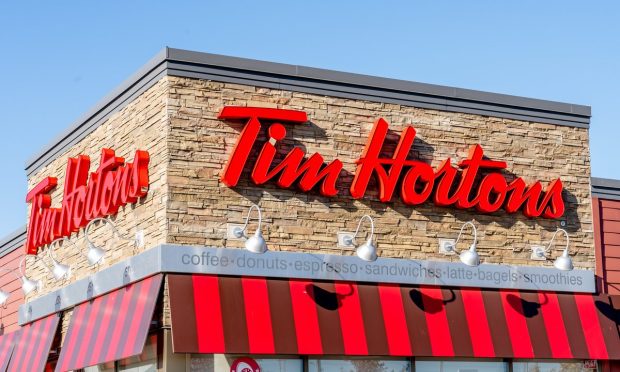Interactive Promotions Boost Restaurant Loyalty Programs, Tim Hortons Parent Co. Reports

As restaurant brands look to wrestle back control of digital ordering from third parties, loyalty programs can be their most powerful tool, incentivizing direct ordering and powering regular communication with customers.
While limited-time promotions typically only go so far when it comes to driving rewards programs’ enrollment and engagement, Tim Hortons appears to have cracked the code.
On a call with analysts Tuesday (May 3) discussing the company’s first quarter 2022 financial results, Joshua Kobza, chief operating officer of Tim Hortons’ parent company Restaurant Brands International (RBI), shared that two “Roll Up to Win” contests in 2021, which offer a range of prizes for scanning codes on certain menu items, grew the program’s membership by 3 million. The company ran the digital promotion in the U.S. in March and April.
For context, on last quarter’s earnings call in mid-February, RBI CEO Jose Cil noted that the program had 4.5 million monthly active users. As such, even if only a small fraction of those 3 million new entrants remained active, they still dramatically increased the program’s membership base.
“As we employ new features in the app — things like our Hockey Challenge [a guessing game with rewards points and special offers as prizes], things like Roll Up — we see those guests start to interact with our app even more frequently,” Kobza explained. “So, that’s driving a lot of our thinking about how we can evolve the Tims Rewards program and how we can evolve the app over time, driving further engagement with such a large and loyal portion of our consumer base.”
Research from PYMNTS’ 2022 Restaurant Friction Index, created in collaboration with Paytronix, which drew from an October survey of a census-balanced panel of more than 2,100 U.S. consumers, found that 43% of consumers say that loyalty programs would encourage them to purchase from restaurants, a greater share than said the same of any other feature.
See also: Loyalty Programs Best Way to Get Diners to Spend More
Additionally, research from PYMNTS’ April study “The Digital Divide: The Key Factors That Drive Restaurant Choice,” also created in collaboration with Paytronix, which drew from a survey of more than 2,600 U.S. adults, found that 1 in 8 restaurant customers cite loyalty offerings as the most important feature encouraging them to order from a specific restaurant.
Read more: From Outdoor Seating to Touchless Payments, Dining Habits Are Changing
Additionally, driving loyalty engagement not only allows brands to incentivize spending with rewards but also to learn more about their customers, improving the effectiveness of messaging and promotions in the future.
“Through loyalty, we’ve been able to see our guests through a different lens,” Tim Hortons Canada Senior Director of Digital and Loyalty Sales Ernest Choi told PYMNTS in a February interview. “By understanding the individual guest’s participation in the loyalty program and purchasing behaviors better, we’ve started engaging them better — by connecting with them through personalized [customer relationship management (CRM)] and offers. We see personalization going beyond just the experience in the mobile app and into our restaurants, which gives our guests an omnichannel digital experience.”
Related news: Tim Hortons: Loyalty Programs Open Customer Channel Beyond the Restaurant
